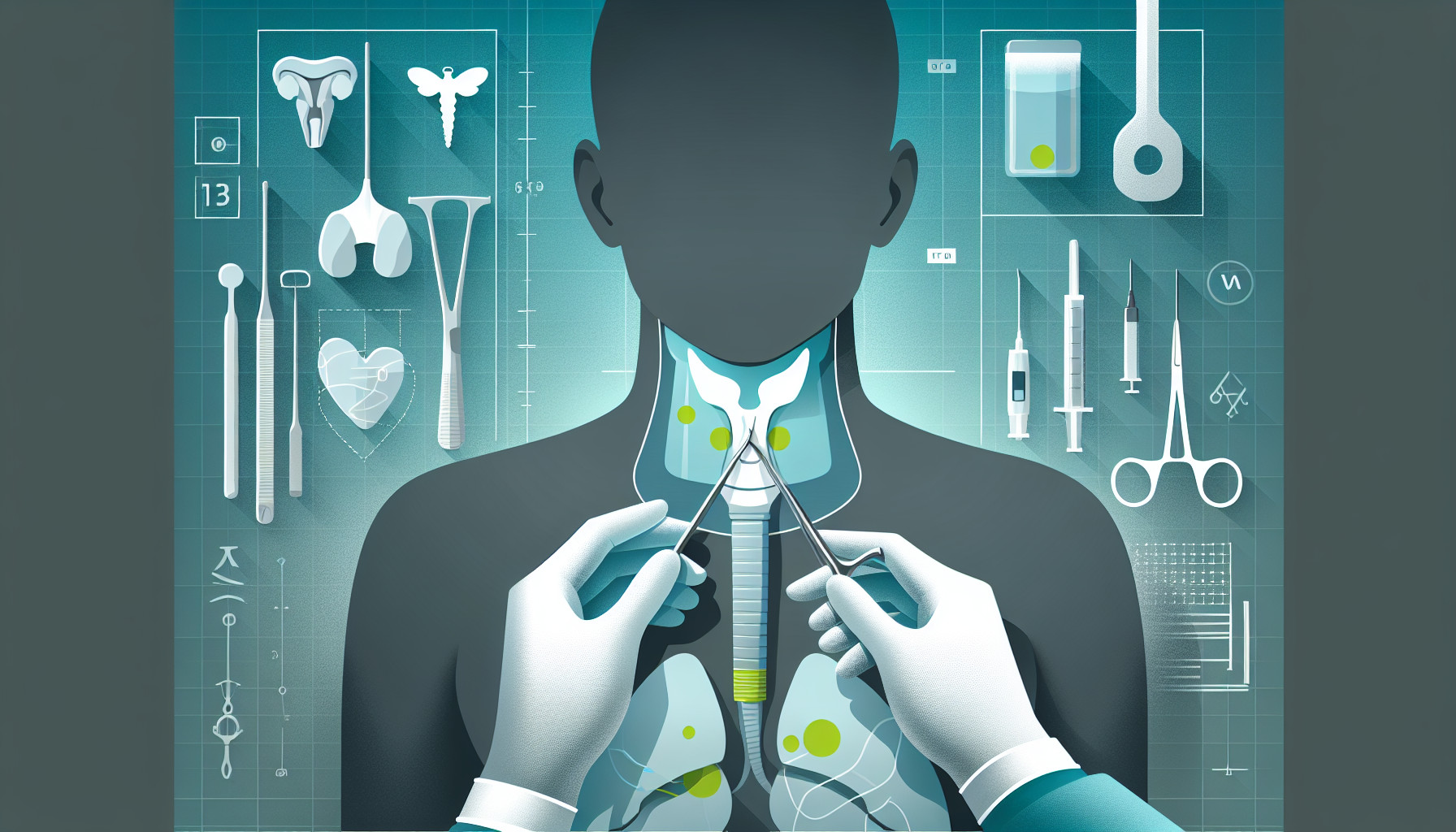Our Summary
This research paper investigates how often thymic tissue (a type of tissue found in the neck) is unintentionally removed during thyroid surgeries in children. The authors of the study reviewed medical charts of children who had their thyroid gland removed at a children’s hospital between 2010 and 2020. They found that among 209 patients, about 25% had thymic tissue removed during their thyroid surgery.
The study also revealed that patients who had additional neck surgery were 3.3 times more likely to have thymic tissue removed. Similarly, patients who had an accidental removal of their parathyroid glands were almost 9 times more likely to also have thymic tissue removed.
This is the first study of its kind and it highlights the need for surgeons to be aware of the possibility of unintentionally removing thymic tissue during thyroid surgeries in children. This is important because it could lead to the accidental removal of other important glands and tissues in the neck.
FAQs
- How often is thymic tissue unintentionally removed during thyroid surgeries in children according to the study?
- What are the chances of unintentional thymic tissue removal in patients who have additional neck surgery or accidental removal of their parathyroid glands?
- What is the significance of unintentionally removing thymic tissue during thyroid surgeries in children?
Doctor’s Tip
One helpful tip a doctor might give to a patient undergoing a thyroidectomy is to ask their surgeon about the possibility of unintentional removal of thymic tissue during the procedure. Patients should also inquire about the surgeon’s experience and techniques to minimize the risk of removing additional glands and tissues in the neck. Additionally, patients should discuss any concerns or questions they have about the surgery with their healthcare team to ensure a successful outcome.
Suitable For
Patients who are typically recommended for thyroidectomy include:
Patients with thyroid cancer: Thyroidectomy is often recommended for patients with thyroid cancer to remove cancerous cells and prevent the spread of the disease.
Patients with benign thyroid nodules: Thyroidectomy may be recommended for patients with large or symptomatic benign thyroid nodules that are causing difficulty swallowing, breathing, or speaking.
Patients with hyperthyroidism: Thyroidectomy may be recommended for patients with hyperthyroidism (overactive thyroid) who do not respond well to other treatments such as medication or radioactive iodine therapy.
Patients with Graves’ disease: In some cases, thyroidectomy may be recommended for patients with Graves’ disease (autoimmune disorder causing hyperthyroidism) who do not respond well to other treatments.
Patients with thyroiditis: In cases of severe thyroiditis (inflammation of the thyroid gland), thyroidectomy may be recommended to alleviate symptoms and prevent complications.
Patients with recurrent thyroid nodules: Thyroidectomy may be recommended for patients with recurrent thyroid nodules after previous treatment.
It is important for patients to discuss their individual case with their healthcare provider to determine if thyroidectomy is the best treatment option for their condition.
Timeline
Timeline before and after thyroidectomy:
Before thyroidectomy:
- Patient may experience symptoms such as fatigue, weight gain, hair loss, and difficulty swallowing.
- Patient undergoes pre-operative testing and evaluation to determine the need for thyroidectomy.
- Patient discusses the procedure with their surgeon and receives information on what to expect before, during, and after surgery.
During thyroidectomy:
- Patient is placed under general anesthesia.
- Surgeon removes part or all of the thyroid gland, depending on the reason for surgery.
- Surgery typically takes 2-4 hours.
After thyroidectomy:
- Patient wakes up in the recovery room and may experience sore throat, neck pain, and difficulty swallowing.
- Patient stays in the hospital for 1-2 days for monitoring and pain management.
- Patient may need to take thyroid hormone replacement medication for the rest of their life.
- Patient follows up with their surgeon for post-operative care and monitoring of thyroid hormone levels.
- Patient may experience temporary or permanent changes in voice or difficulty regulating body temperature.
- Patient may need additional treatment or surgery if complications arise, such as removal of thymic tissue that was unintentionally removed during the thyroidectomy.
What to Ask Your Doctor
- What is the likelihood of unintentionally removing thymic tissue during a thyroidectomy?
- What are the potential risks or complications associated with the removal of thymic tissue during thyroid surgery?
- How can the surgeon minimize the risk of unintentionally removing thymic tissue during the procedure?
- Are there any specific factors or conditions that may increase the likelihood of thymic tissue removal during thyroid surgery?
- How will the removal of thymic tissue affect my overall health and well-being post-surgery?
- Are there any alternative treatment options that do not involve the removal of thymic tissue?
- What is the role of thymic tissue in the body and how important is it for overall health?
- How can I ensure that the surgeon is aware of the potential risk of unintentional thymic tissue removal during my thyroidectomy?
- Are there any specific precautions or measures that can be taken to prevent the accidental removal of thymic tissue during surgery?
- Can I speak with a surgeon who has experience with thyroid surgeries in children and is knowledgeable about the potential risks of thymic tissue removal?
Reference
Authors: Sahyouni G, Osterbauer B, Park S, Paik C, Austin J, Kwon D, Gomez G. Journal: Int J Pediatr Otorhinolaryngol. 2022 Jul;158:111168. doi: 10.1016/j.ijporl.2022.111168. Epub 2022 May 4. PMID: 35544968
